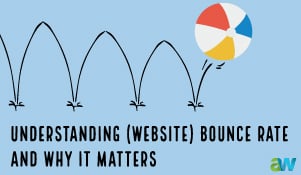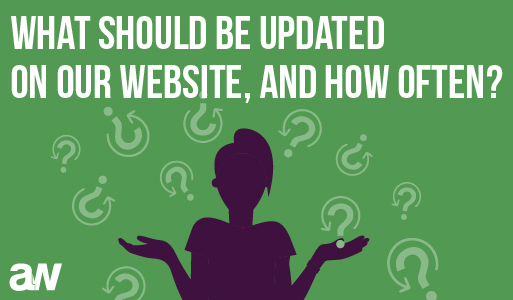A search for “shoe store” in Google yields more than 3 million matches, while “doctor” supplies more than 72 million matches. More and more companies of all sizes are turning to the Web to both inform customers and gain their business.
The growing field of e-commerce is constantly changing making it easy for small businesses without the resources to hire Web consulting firms to get lost in the fray. Bob Pengelly, Director of Special Projects for Beyond E-mail Inc. in Greensboro, often hosts seminars in the Triad to help small businesses with common Web development problems. He says some of the most common problems he sees in website design don't even have anything to do with the e-commerce aspect and can be as simple as having music too loud when the site opens.
“If for no other reason, you have a website so people can connect and exchange information; you're letting people get to know your business,” says Gary Simon, owner of Simon Jewelers. “Everyone needs to know the basics of Web technologies before they begin e-commerce or even just a website if they want it to be a success.”
Experts in the Web consulting field agree that many small-business owners are misinformed or underinformed about web-based technologies for marketing and selling their products and services.
Site design
Adrienne Cregar, president of High Point-based Atlantic Webworks, says she sees a number of mistakes over and over again when working with small-business site design. “The design and functionality (of your website) should appeal directly to your target market and ultimately drive the visitors' actions to achieve the objectives you have set,” she says. “Design is critical to the success of an e-commerce website. For example, if you want to encourage online inquiries or applications, the feedback forms (or links to them) should be prominently displayed, and the design of the page should direct the visitor's eye to the forms (or their links).”
One of Cregar's clients, a retirement community, had a “beautiful website" but was not getting any results from it. When Atlantic consultants reviewed the site, they found the problem lay in the design. The target audience was senior citizens, but the site had small fanciful text with screened images behind it. Seniors literally could not read the text on the site. Pengelly cautions that business owners should always focus on creating a user-friendly site design and recommends using an 800 by 600 pixel-sized site so customers don't have to scroll left or right, and all links and buttons remain visible. Both Cregar and Pengelly say small business owners should be careful when using complicated graphics or flash technology on their websites. “If the market is using a dial-up Internet connection, use simple graphics. Additionally, one in 12 men are colorblind, making red a tricky color to use in site design,” Pengelly says. “The use of multimedia graphics should be limited to when they have a purpose to help you reach your objectives, not just for the ‘cool factor,’ ” Cregar says. “Using them when not necessary will draw attention away from the more important target areas of your site.”
Site content
1. Listing products or services vs. spotlighting a competitive advantage: While a site should show a company's products and services, it is important to remember that there are millions of websites offering things similar to yours. Focus on telling the customer why you are unique or can better serve them. Convey your competitive advantage in a clear, obvious manner.
2. Lack of clearly visible contact information: Always make it easy for the visitor to contact you by providing multiple mediums such as e-mail links, direct-response forms, phone numbers, and addresses. Make these easy for the visitor to see. It is extremely frustrating to customers to have to hunt for this information.
3. Poor site navigation: Visitors should be able to get to any primary page on your site with one click. Do they have to use the “back” button to return to pages they have left? They shouldn't have to. Poor site navigation is one of the primary reasons visitors leave websites. At a minimum, every page on your website should have navigation (textual or graphical links) to each of the primary pages, and ideally, links to all pages.
4. Outdated content or technologies: As a business, you only get one chance to make a first impression. You will have visitors to your website who have not been to your office or retail store and have never met your staff. Their only impression of your business will likely be the one they form based on your website. They should not see references to dates that have already passed or experience broken links.
“To avoid driving customers away through your site,” Pengelly says, “make sure it's really ready before it's launched. Have friends and employees visit and troubleshoot for you.”
Searching and advertising
Once a site is designed and established, the next step for business owners is adding to it and optimizing its placement in major search engines. “Search engines are probably the most misunderstood part of the internet right now,” Pengelly says. To get listed with Google, the business must submit its URL to be “spidered.” Spidering is when the search engine reads the site and determines what search words it will be associated with. “The usage of graphical imagery and text must be properly balanced to better enable search engines to spider (evaluate and index) the site,” Cregar says.
In addition, businesses may also pay to have an ad listed on the right side of the Google bar (the top of the Yahoo! search engine). The placement of a business' ad is determined by how much they are willing to pay per click-through. That is, the amount a business owner pays each time a person clicks their advertisement and is taken to their website.
This is constantly changing, especially around holidays, Pengelly says, so it's important for businesses to check in frequently with the search engines and keep their per click-through price current so their ad is near the top of the page.
When using paid placement, owners get to submit search or key words that result in their ad appearing. “Be sure to regionalize your terms if you're not interested in selling globally,” Pengelly says.
“Ads in search engines and elsewhere also need to be well-planned,” Pengelly says. “For example, if your ad is for Mother's Day flowers, the link should go to a page with Mother's Day bouquets, not the home page. This saves customers time and puts them closer to the product they're obviously interested in buying, if they click the link.”
Cregar and Pengelly emphasize the impact a website, whether poorly or brilliantly designed, can have on a potential customer. “The site's design must engage the visitor, direct his eye to the products, and convert a shopping experience into a purchasing event,” Cregar says.









Leave a comment